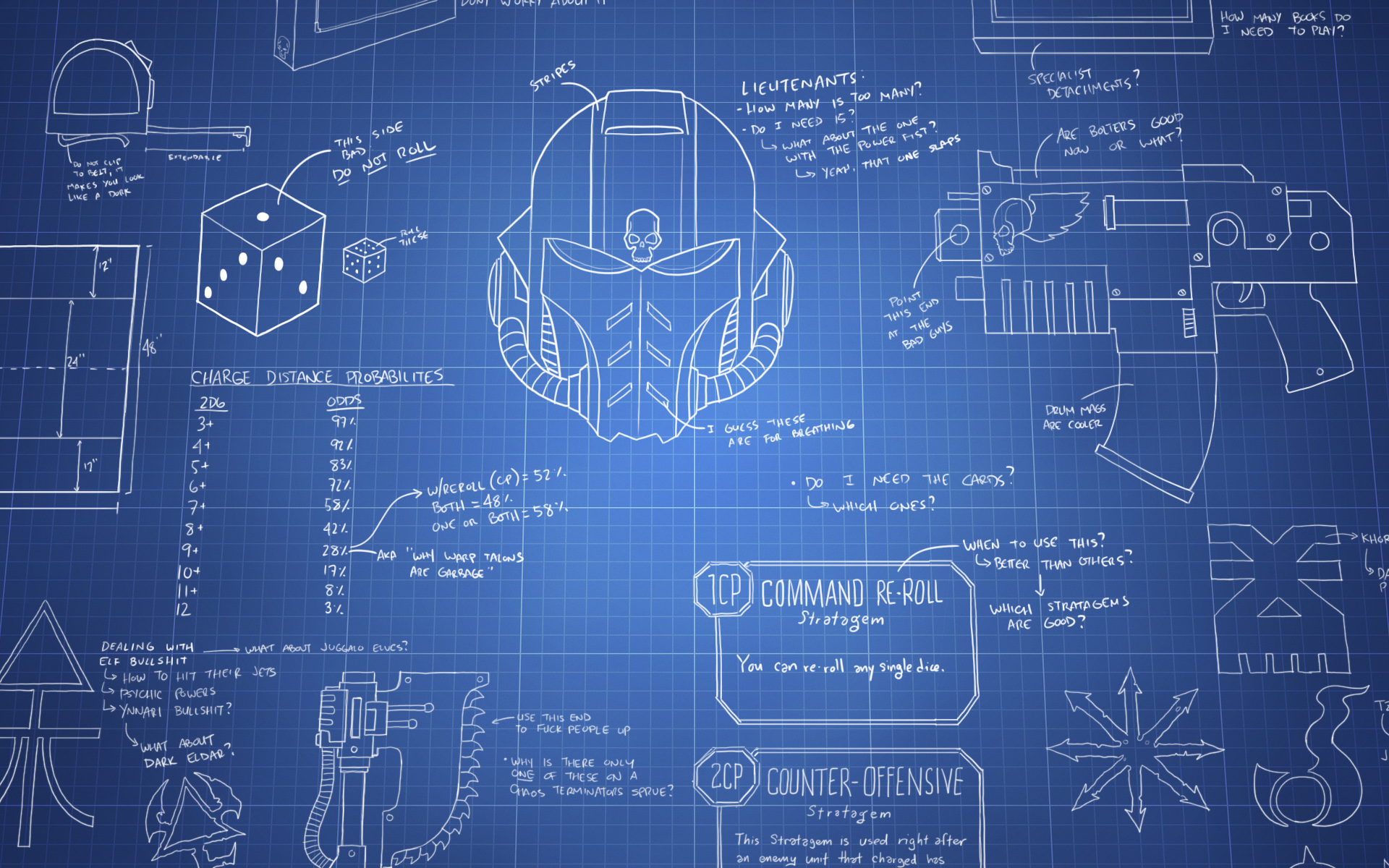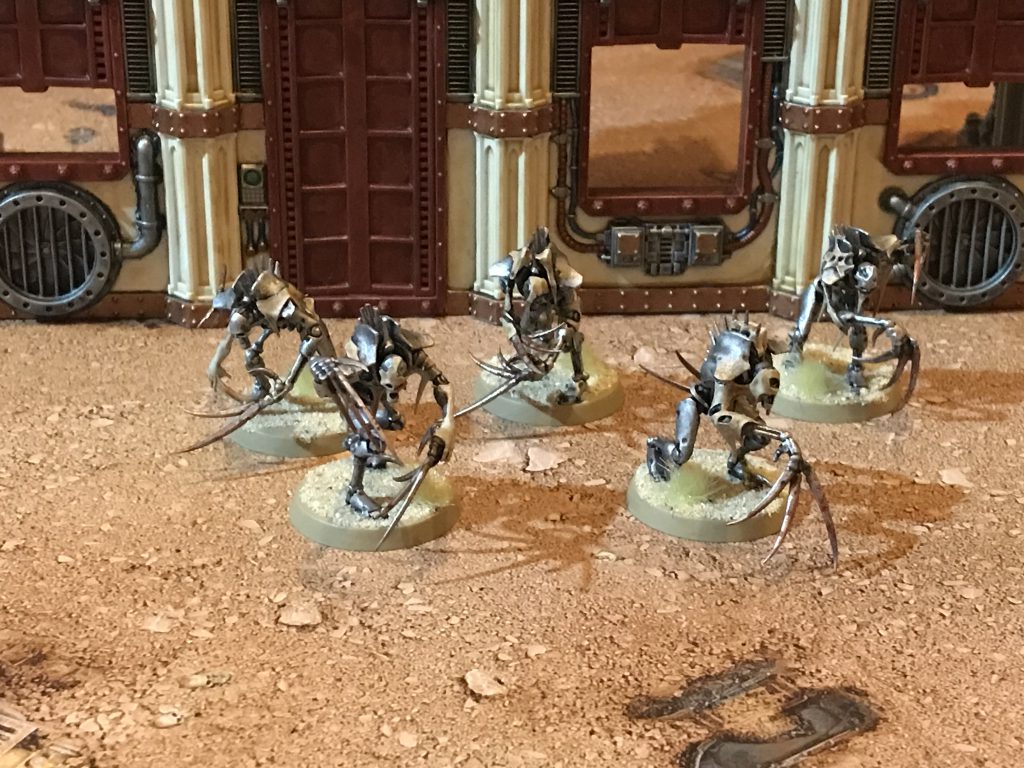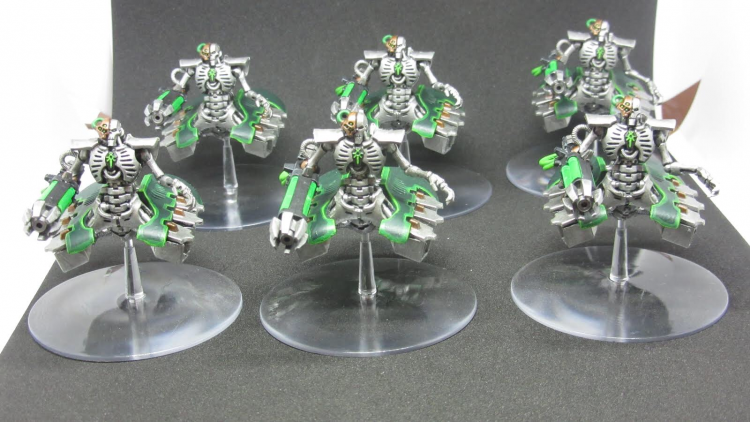Welcome to War Zone: Nephilim! There’s never been a shake-up this large during an edition of 40k, and in June Games Workshop dropped a new missions pack with all-new secondaries, changed how CP works in games, published new, all-digital points for the first time ever, and published a new balance dataslate, dramatically shifting the power levels of some armies.
With any big changes comes a new series of Faction Focus articles and we’re doing the same for Nephilim as we did for Nachmund. In this article Wings (now fully back to being OVERLORD_WINGS) will talk about Necrons, covering how the faction changed, what it means for playing them, how they’re likely to fare in the new meta, and offer a list with some thoughts on playing them.
The Notable Changes
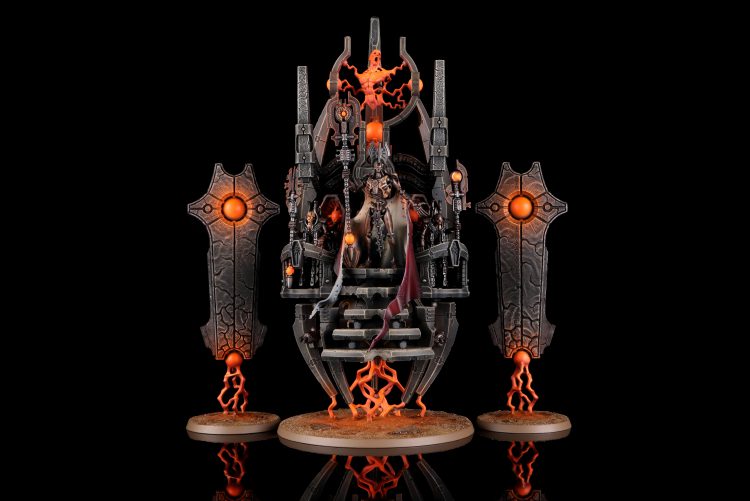
The Summary
- Massive Point Drops: Necrons picked up some decent points drops on many of the things that didn’t decrease in the last round, and some fairly massive ones on centrepieces like the C’tan. This makes some of those big units more viable, and generally allows you to squeeze more stuff into lists.
- CORE for all Vehicles: All Necron Vehicles are now CORE – even the Characters like the Silent King and Catacomb Command Barge. If you’re building your list around hulls this gives you some great new options, but those two Characters are where this particularly shines, turning the Silent King into an absolute nightmare thanks to his own Auras, and making the Catacomb Command Barge useful for one of the new Secondaries.
- Command Protocols are Great Now: Command Protocols have long been viewed as the worst army-wide bonus in the game – but not any more. You now get to pick one Command Protocol to be active all game in addition to whichever you set up for the turn, and they work on units anywhere on the battlefield as long as any of your Characters are alive, not just Nobles. Suddenly, this is much more like getting a configurable extra Chapter Tactic with some turn-to-turn bonuses in addition, and is really really good.
- Top-tier Secondaries: Necrons get some of the best Secondaries in the game, letting them score points very aggressively.
Perhaps unsurprisingly given that all the points above are positive, Nephilim represents an exceptional boost to Necrons, and early results appear to suggest that this time the upgrades have done enough to make them a force to be reckoned with. The Silent King drives some of this, being in pretty clear contention for best unit in the game, but a far broader swathe of their roster is also now seriously viable, Vehicles because they can pick up buffs (including the Silent King’s) and others like Ophydian Destroyers because the Secondaries reward mobility, and your permanent Command Protocol can shore up whatever was holding them back in the past.
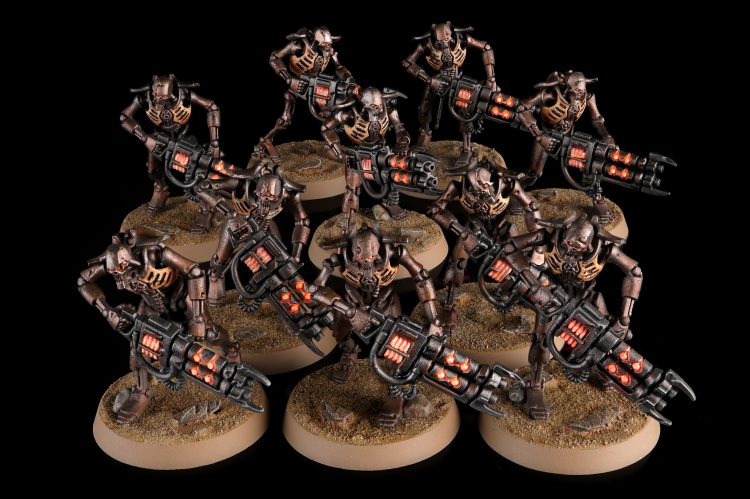
You also get to plug these upgrades into the things that Necrons did already do well! Large Warrior blobs with buff support still represent a speed bump that some armies can seriously struggle with, and their biggest predator (Hail of Doom Craftworlds) has been taken down a notch. Eternal Expansionists is still one of the best faction trait combos GW has ever printed (and Novokh is no slouch either), and the combination of better units and a great Secondary plan combines well with it. Finally, Skorpekh Destroyers are some of the nastiest melee killers out there, and you can pack a lot of them into lists if you want to. It’s a great time to muster a murderous robot skeleton legion.
Using New Command Protocols
Most of the time there are three Command Protocol options that you’re likely to pick as your game-long option:
- Hungry Void: +1S in the first round of combat all of the time rules, and if you’re Novokh the occasional extra AP is more relevant than you might think in the Armour of Contempt metagame.
- Sudden Storm: +1” movement all the time is also very good, and for this one the fact that you do get to pick which mode activates each turn can matter too – if your Necron Warriors are chilling out on an objective and you need an Action from them, switch to Action and Shoot for the turn.
- Conquering Tyrant: Boosting the size of the Silent King’s aura is extremely good, allowing your melee units to roam further from him without losing their re-rolls. This is also another one where being able to switch it for a single turn is powerful – suddenly having army-wide fall back and shoot when you need it is a useful trick to have access to.
None of the others provide the consistent power needed to want them up all the time, but having these three to flex between game-to-game is extremely strong. As Novokh I’ve been defaulting to the Hungry Void, but even there I switched it out to Sudden Storm when I was across the table from Harlequins, because the extra S and AP would do very little for me while extra mobility to face the clowns would do a lot.
Units to Watch
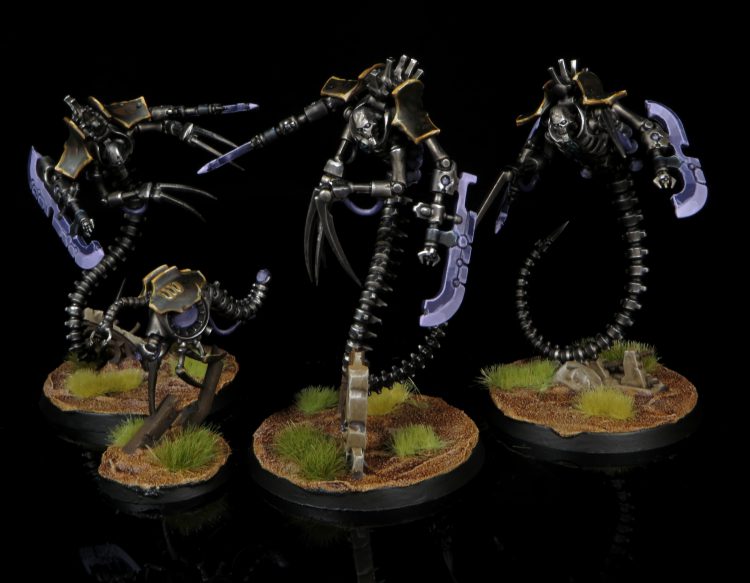
Lots of Necron units get a lot better, and some of them are pretty obvious – no one needs telling that the Silent King is extremely good now, and C’tan are way more appealing when they’re cheap. However, there are plenty of other things on the roster that are much more valuable in armies now.
- Ophydian Destroyers: Having access to permanent Hungry Void is huge for these, as being stuck at S4 on most of their swings left them a bit anemic. Now they’re pretty reliable at trading up, and are a fast CORE unit for Actions as well.
- Lokhust Destroyers: Finally cheap enough that they’re actually worth using, and there currently seems to be a bit less flat 3 damage attacks in the metagame than has been the case for a while.
- Tomb Blades: An MSU of these with particle casters is incredibly cheap now, making them a good add to Eternal Expansionsists lists (and biggers units a consideration in other builds).
- Triarch Praetorians: Slightly cheaper, more Marine bodies to prey upon, and another unit where fast and CORE has more intrinsic upside now (but these are not for the Eternal Expansionists builds because they don’t get faction traits).
- Monoliths: I am reasonably sure that three Eternal Expansionists Monoliths, the Silent King, and 700pts of fast stuff is a real list now, if anyone’s brave enough to try it. Unless someone sends me three painted Monoliths, it won’t be me.
If these have been sitting on your shelf, time to get them out and give them a try.
Playing Nephilim Missions
There are two key aspects of the new mission pack that impact on Necrons – Army Construction and their Secondaries.
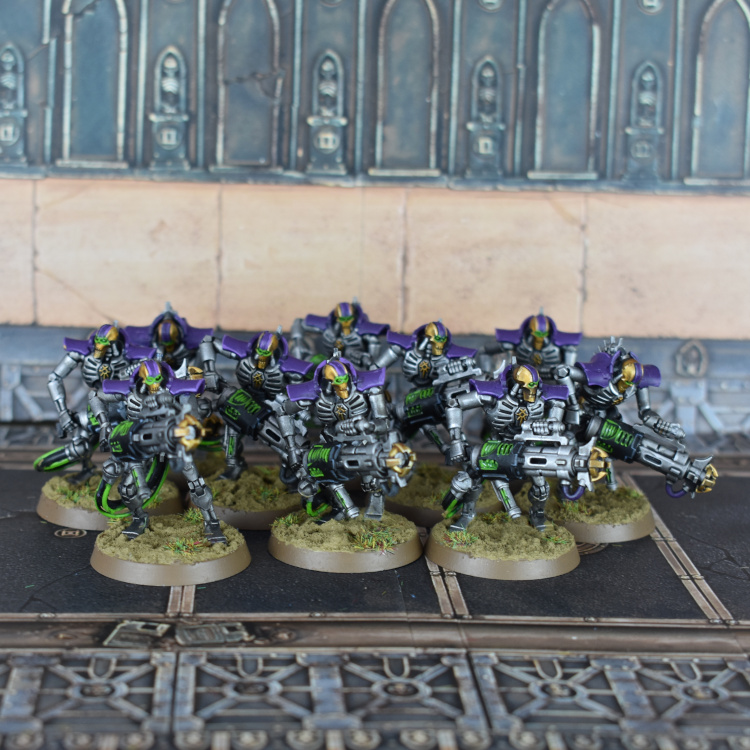
Army Construction is the one place where the news is mixed, as despite a small point change to Immortals, building the detachments you want can still be a challenge for the army. You tend to want a lot of either or both of Fast Attack or Elite slots, but getting either comes with a price – an Outrider eats your CP, while getting Elites can mean building a Battalion, which still isn’t fantastic for the army. The Silent King can, of course, paper over these cracks considerably, as he brings lots of bonus CP with him, and you don’t really care about his Warlord Trait any more, but if you aren’t running him your options get a bit narrowed. “Luckily” most Necron Warlord traits are fairly bad, and there’s only one absolute must-have relic (the Veil of Darkness) so you can get by when needed, but when the King is on the bench there will definitely be some tradeoffs to consider.
Now, on to Secondaries, where the news is pretty much all good. You get four of these, spread across every category except Warpcraft, and a lot of the time you’re going to want to pick three of the faction ones.
- Treasures of the Aeons: Now that opponents cannot choose an objective in their deployment zone, a lot of the time this is just straight up better Stranglehold, as in any situation where you’d have scored that you are near guaranteed 3 or 5 on this, and you can pick up 2s in situations where Stranglehold would have missed. You will pick this in most games, with the only time you even really need to think about the choice being against armies with lots of ObSec counts as 5 models like Armigers or Lurk Tyranids.
- Code of Combat: This still scores you three points when one of your Nobles mercs something at range, but now hands out 4VP if they pull it off in melee, and a bonus CP if they gloriously decapitate an enemy Character. That’s pretty good – there is always going to be some risk in picking this, but you can and should be building for it. The Silent King can usually cover this on his own if the opponent doesn’t have the shooting to put him down, but bringing a Catacomb Command Barge alongside can help lock it in. A pair of Catacomb Barges, or a Barge and a foot Noble with the Voltaic Staff, can also often handle this in King-less lists.
- Ancient Machineries: This got a significant re-vamp in the new pack, and is now fairly standard among “Action on each Objective” secondaries but is definitely a good example thanks to the combination of Keywords allowing almost every non-Character unit to do it (and even within Characters it’s open to CCBs and the Silent King), plus finishing in the same turn if you have ObSec. This does of course mean that Eternal Expansionists are incredible at this, almost impossible for any army except Lurk Bugs/Knights to stop scoring highly. In combination with them likely being able to max Treasures in three turns a lot of the time, that gives them a much higher chance of winning if they start running out of stuff in the late game, which is still a threat for Necrons despite all the upgrades. This Secondary existing also means that there’s a higher intrinsic value to fast units like Ophydian Destroyers and Triarch Praetorians that wouldn’t have seen play before – you want those both to allow you to guarantee starting this outside your zone turn one, and for late game dashes to finish stuff off.
- Purge The Vermin: The final Secondary here is another strong one, because it essentially rewards you for playing how Necron armies often will anyway, which is sending out probing units into the opponent’s part of the board while brutally murdering anything that gets too close. It has a pretty high floor, because you’re very likely to score minimum 2VP unless you’re getting properly hammered, and some games when you choose this the opponent basically has to pick between surrendering an easy 12VP+ or warping their game plan to take risks they don’t really want to.
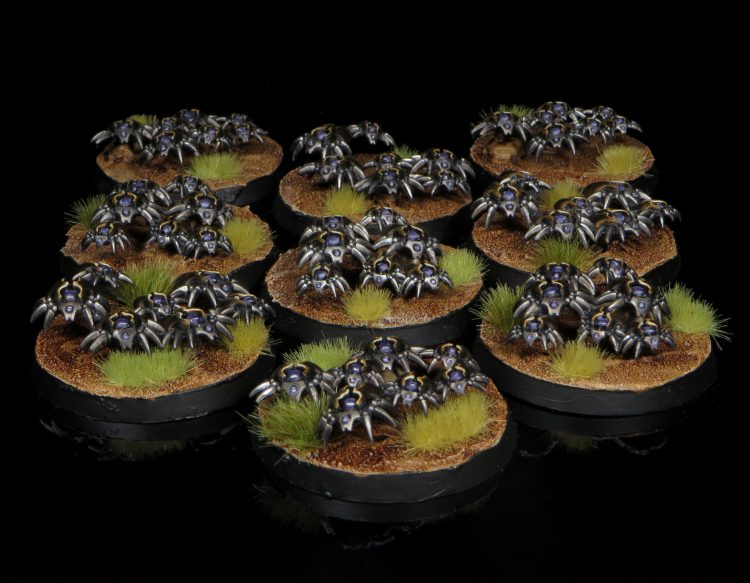
All that comes together to mean that the key things Necron armies want to be able to do to maximise their chances of high scores are:
- Include enough fast units that quickly building up points on Treasures and Machineries is feasible. As mentioned above, you are still vulnerable to losing momentum and getting tabled in turns 4 and 5, but if you’ve already maxed your Secondaries and heavily dented your opponent’s Primary by then, who cares?
- Include some good melee counterpunch units to help with Purge. The Silent King kind of does this by himself, but bringing some Skorpekh is also excellent.
- Aim to have two Nobles that can kill stuff in your lists so Code is an option.
These are so good that you don’t have to build for any of the generic Secondaries, though my early impression from getting some games in is that having a backup plan for Retrieve Nachmund Data can be good if you’re in one of the matchups where Machineries is weak. Code will sometimes be a dud too, but generally that’s in games like Knights where one of the generic Purge Secondaries will come to the fore.
Squaring Up Against the Meta
The Positive
Necrons are very effective at punishing opponents that are short on ObSec, can’t reliably take out the Silent King at a distance, or struggle to clear a Warrior blob in a single turn. This makes them pretty strong against many non-Hail of Doom Aeldari lists, especially as far fewer Harlequin players are running full Voidweaver units, one of the few things in their faction that can burst down a Warrior unit.
Many lists you build will also excel in a brawl situation – the Silent King providing lots of melee wound re-rolls allows armies heavy on Wraiths and melee Destroyers to counterpunch brutally, and Novokh is also extremely vicious on a counterattack. This means that armies like Orks, melee Marines and (to a lesser extent) Bloody Rose who want to come to you can also give you some advantages, though exact list composition can change that up.
The Struggle
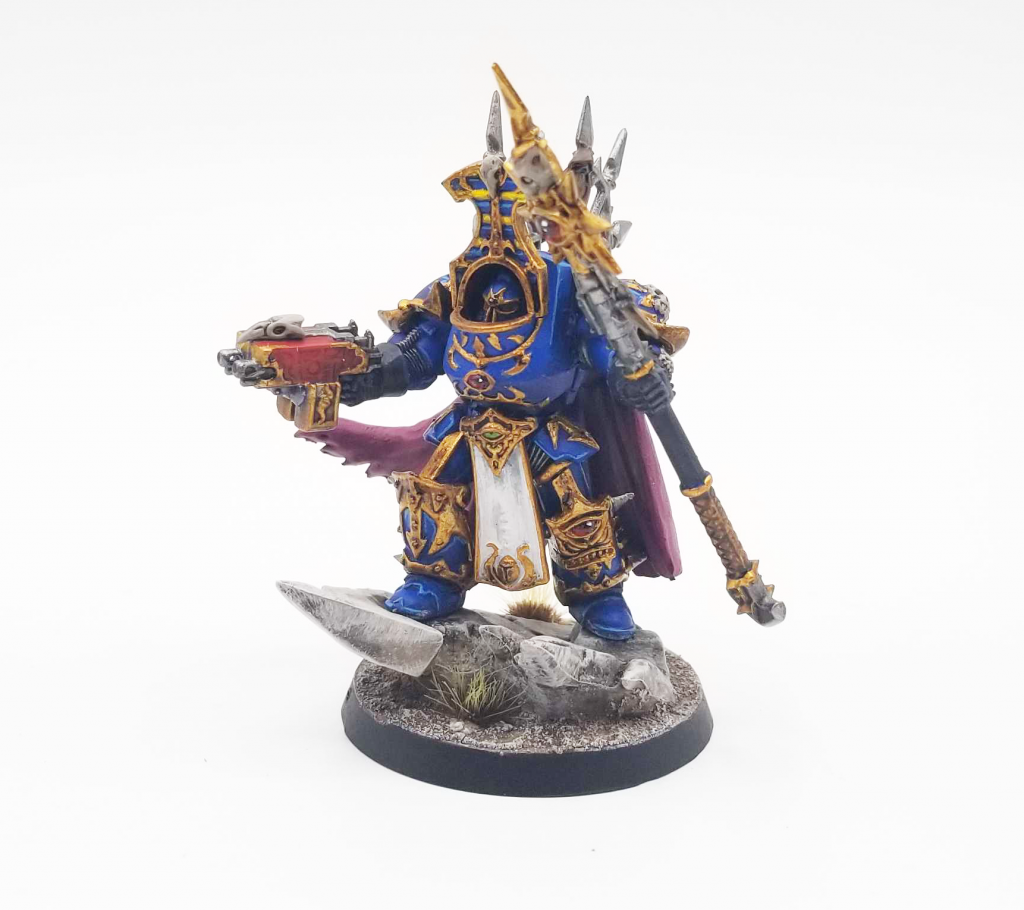
Thousand Sons are a tough matchup for many Necron lists, and are easily the best counter out there. The volume of psychic damage they can throw out bypasses a lot of your defences (and you have limited options to interact with it), buff-stacked Terminators evaporate a Warrior block with extreme reliability, and Armour of Contempt stacked on top of All is Dust blunts quite a few good units. Some of this is true for Grey Knights as well, but the fact that they’re generally sending units like Interceptors in your direction, and often want to use their casts for Purifying Ritual, means you’ve got more angles to interact positively with them.
The other category of particularly challenging matchup are ones where the opponent gets both ObSec and the ability to count as multiple models on lots of units, as this can blunt a key aspect of the Eternal Expansionists game plan, and make it tougher to score Secondaries for all lists. Knights of both flavours are thus pretty challenging, especially Imperial Knights as Armigers with Bondsman on can go toe to toe with your big damage dealers, and Lurk Tyranids are also a potential problem.
Finally, some Tau builds are going to have the right weapons to badly mess with you, but the good news is that you’re seeing far fewer lists packing the flamer/burst Crisis bombs, which were the biggest problem for Necrons.
The Lists
We’re going to include two lists for Necrons for one simple reason – you should basically always include the Silent King if you want the best chance of winning, but he’s expensive and takes ages to paint, so some players might want an option that excludes him. Luckily, I am one of the players who still has a shameful pile of partially painted subassemblies on his desk, so I’ve been getting stuck in with Novokh and have some thoughts on how to make them really work after a field test at the Bournemouth Brawl.
Silent King Eternal Expansionists
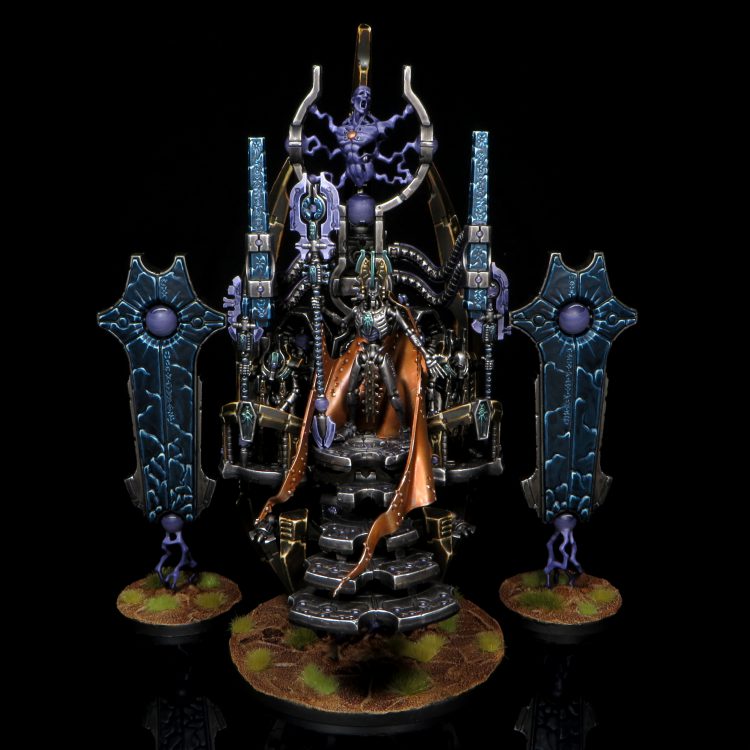
Supreme Command Detachment
The Silent King – 400, Warlord, +3CP
Outrider Detachment -3CP
HQ
Catacomb Command Barge, Resurrection Orb, Voltaic Staff, Gauss Cannon, Enduring Will – 180pts, -2CP
Chronomancer, Aeonstave, Veil of Darkness – 75pts, -1CP
Troops
20 Necron Warriors with Gauss Reapers – 260
Elites
5 Skorpekh Destroyers – 150
5 Skorpekh Destroyers – 150
Plasmacyte (no slot) – 15
Fast Attack
3 Scarab Swarms – 45
3 Scarab Swarms – 45
3 Wraiths – 105
3 Wraiths – 105
3 Ophydian Destroyers – 90
3 Ophydian Destroyers – 90
Heavy Support
6 Lokhust Destroyers, Lokhust Heavy Destroyer with Gauss – 285
1995pts, 3CP
This list has the power of the Silent King, a full Warrior unit to pressure the early and mid game, and then a diverse variety of speedy/choppy things to send out to steal objectives as needed. Backing it all up, the big Destroyer unit can force a lot of caution from some opponents, and having the option to zap it across the table with the Veil of Darkness can be crushing in some games.
Novokh
Surprise – there are actually no fewer than three versions of this list here. The first (in the expand tags below) is what I took to the Bournemouth Brawl, and it felt promising, but like it needed either more mobility or some more reliable reach.
Original List
Original List - Click to Expand Novokh Battalion HQ Catacomb Command Barge, Blood Scythe, Enduring Will, Gauss Cannon – 155, -2CP Troops 20 Warriors with Reapers – 260 Elites Nightbringer, Sky of Falling Stars – 320 Fast Attack 3 Scarab Swarms – 45 Heavy Support 3 Lokhust Heavy Destroyers with Gauss – 150 2000pts, 2CP
Overlord, Warlord, Voltaic Staff, Resurrection Orb – 115 -1CP
Chronomancer, Countertemporal Nanomines, Entropic Lance, Veil of Darkness – 110, -1CP
(No Slot) Technomancer, Canoptek Cloak, Metallodermal Tesla Weave – 85
5 Immortals – 80
5 Immortals – 80
Canoptek Reanimator – 80
20 Flayed Ones – 200
5 Lychguard, Shields – 125
6 Skorpekh Destroyers – 180
(no slot) Plasmacyte – 15
The units that were most often dead in the original build were the Lychguard and the Heavy Destroyers. The former generally bimbled off to bully an objective, which was fine, but would have been better if they’d been something speedy, and the latter admittedly rolled like complete ass most of the weekend, but also didn’t have great targets a lot of the time. Finally, the theory was that a big block of flayed ones could pivot into the Warrior role if the former died, but I found that didn’t play out. That’s not to say they were bad but I was generally using them more aggressively, and crucially I felt I would have gotten a lot more value with them as two smaller units. The Technomancer was also merely OK, and I felt like the ObSec manipulation and extra mortals from a Psychomancer would have done more. Finally, I felt myself wanting access to a Retrieve Nephilim Data plan in some of the games where one of the faction secondaries was unusually weak for whatever reason.
This has given me two new options I’m wavering between for my next event (the July FactoruM/DZTV GT) that go two different routes in addressing this. One cuts the Destroyers to go all-in on more melee, and makes some of it faster, while the other packs in the Lokhust bomb for some shooting reach.
All-in Melee Mode
Novokh Battalion
HQ
Catacomb Command Barge, Blood Scythe, Enduring Will, Gauss Cannon – 155, -2CP
Overlord, Warlord, Voltaic Staff, Resurrection Orb – 115, -1CP
Chronomancer, Entropic Lance, Metallodermal Tesla Weave – 100
(No Slot) Psychomancer, Atavindicator, Veil of Darkness – 85, -1CP
Troops
20 Warriors with Reapers – 260
5 Immortals – 80
5 Immortals – 80
Elites
Nightbringer, Sky of Falling Stars – 320
Canoptek Reanimator – 80
10 Flayed Ones – 100
10 Flayed Ones – 100
Canoptek Spyder, Gloom Prism – 65
6 Skorpekh Destroyers – 180
(no slot) Plasmacyte – 15
Fast Attack
4 Scarab Swarms – 60
3 Ophydian Destroyers – 90
5 Triarch Praetorians – 110
1995pts, 2CP
Ophydians and the Triach add speedy threats, and 10 Flayed Ones is still a genuine threat as Novokh, but are far more flexible here. Sneaking in a Spyder also stops Psychic Action secondaries being such free points against me.
Shooty Option
Novokh Battalion
HQ
Catacomb Command Barge, Blood Scythe, Enduring Will, Gauss Cannon – 155, -2CP
Overlord, Warlord, Voltaic Staff, Resurrection Orb – 115, -1CP
Chronomancer, Aeonstave, Metallodermal Tesla Weave – 90
(No Slot) Psychomancer, Atavindicator, Veil of Darkness – 85, -1CP
Troops
20 Warriors with Reapers – 260
5 Immortals – 80
5 Immortals – 80
Elites
Nightbringer, Sky of Falling Stars – 320
Canoptek Reanimator – 80
10 Flayed Ones – 100
6 Flayed Ones – 60
6 Skorpekh Destroyers – 180
(no slot) Plasmacyte – 15
Fast Attack
3 Scarab Swarms – 60
3 Ophydian Destroyers – 90
Heavy Support
5 Lokhust Destroyers, Lokhust Heavy Destroyer with Gauss – 245
2000pts, 2CP
Fewer units to play with, but the Lokhusts are very nasty, and might give the army more of a plan against stuff that can out-brawl it. Which option I go for will, if I’m honest, substantially depend on whether the Canoptek Spyder for option 1 is finished in time!
Wrapping Things Up
That concludes our look at Necrons, but we’ll have more over the next few weeks as we cover each of the game’s factions and some of the subfactions. Until then, if you have any questions or feedback, drop us a note in the comments below or email us at contact@goonhammer.com.
